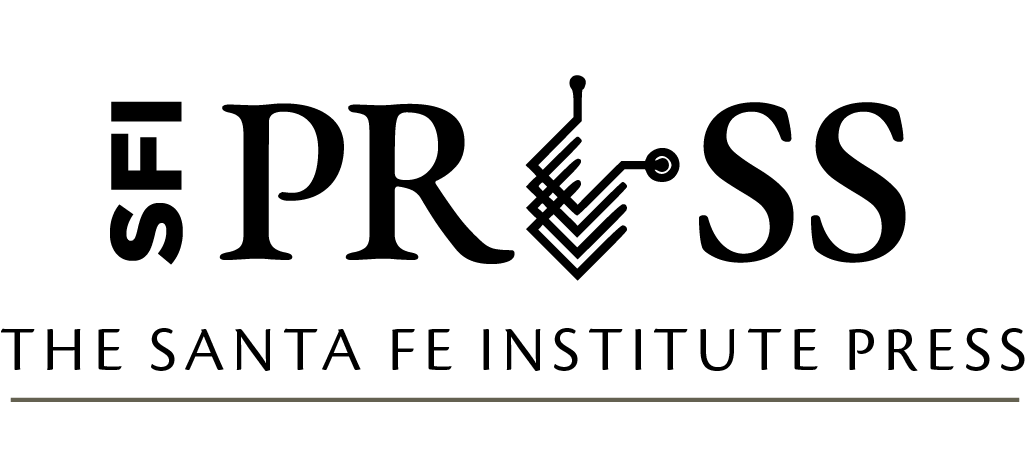80-schuster-1994
Foundational Papers in Complexity Science pp. 2563–2579
DOI: 10.37911/9781947864559.80
The Architecture of Genotype–Phenotype Maps
Author: Evandro Ferrada, Universidad de Valparaíso
Excerpt
In this 1994 paper, Peter Schuster, Walter Fontana, Peter F. Stadler, and Ivo L. Hofacker reviewed a series of findings arising from a computational model of ribonucleic acid (RNA), published during the 1980s and early ’90s. Insights from this model not only supported previous theoretical ideas on the early evolution of life, but also gave rise to a computational framework for the study of the molecular principles of the evolutionary process. Such framework was groundbreaking, combining notions of information and coding theory with ideas from biochemistry, genetics, structural biology, and bioinformatics.
The choice of RNA as a computational model was not serendipitous. Peter Schuster had previously collaborated with Manfred Eigen on the theory of quasi-species and the hypercycle (Eigen and Schuster 1977; Eigen, McCaskill, and Schuster 1988). A central theme of their contributions was the chemistry of prebiotic systems. By the early ’70s molecular biology had established the universal role of RNA in the flow of genetic information, as well as uncovered molecular mechanisms for the replication of RNA viruses (Spiegelman 1971). These findings made RNA an interesting model for studying molecular evolution.
Bibliography
Amitai, G., R. D. Gupta, and D. S. Tawfik. 2007. “Latent Evolutionary Potentials under the Neutral Mutational Drift of an Enzyme.” HFSP Journal 1 (1): 67–78. https://doi.org/10.2976/1.2739115/10.2976/1.
Ancel, L. W., and W. Fontana. 2000. “Plasticity, Evolvability, and Modularity in RNA.” Journal of Experimental Zoology 288 (3): 242–283. https://doi.org/10.1002/1097-010X(20001015)288:3<242::AID-JEZ5>3.0.CO;2-O.
Chothia, C., and A. M. Lesk. 1986. “The Relation between the Divergence of Sequence and Structure in Proteins.” The EMBO Journal 5 (4): 823–826. https://doi.org/10.1002/j.1460-2075.1986.tb04288.x.
Eigen, M., J. McCaskill, and P. Schuster. 1988. “Molecular Quasi-Species.” The Journal of Physical Chemistry 92 (24): 6881–6891.
Eigen, M., and P. Schuster. 1977. “A Principle of Natural Self-Organization: Part A: Emergence of the Hypercycle.” Naturwissenschaften 64:541–565. https://doi.org/10.1007/BF00450633.
Fontana, W., and P. Schuster. 1998. “Continuity in Evolution: On the Nature of Transitions.” Science 280 (5368): 1451–1455. https://doi.org/10.1126/science.280.5368.1451.
Li, H., R. Helling, C. Tang, and N. Wingreen. 1996. “Emergence of Preferred Structures in a Simple Model of Protein Folding.” Science 273 (5275): 666–669. https://doi.org/10.1126/science.273.5275.66.
Lipman, D. J., and W. J. Wilbur. 1991. “Modelling Neutral and Selective Evolution of Protein Folding.” Proceedings of the Royal Society of London B: Biological Sciences 245 (1312): 7–11. https://doi.org/10.1098/rspb.1991.0081.
Maynard Smith, J. 1962. “The Limitations of Molecular Evolution.” In The Scientist Speculates: An Anthology of Partly Baked Ideas, edited by I. J. Good, 252–256. New York, NY: Basic Books.
Reidys, C. M., and P. F. Stadler. 2001. “Neutrality in Fitness Landscapes.” Applied Mathematics and Computation 117 (2–3): 321–350. https://doi.org/10.1016/S0096-3003(99)00166-6.
Šali, A., and T. L. Blundell. 1993. “Comparative Protein Modelling by Satisfaction of Spatial Restraints.” Journal of Molecular Biology 234 (3): 779–815. https://doi.org/10.1006/jmbi.1993.1626.
Schultes, E. A., and D. P. Bartel. 2000. “One Sequence, Two Ribozymes: Implications for the Emergence of New Ribozyme Folds.” Science 289 (5478): 448–452. https://doi.org/10.1126/science.289.5478.448.
Schuster, P., W. Fontana, P. F. Stadler, and I. L. Hofacker. 1994. “From Sequences to Shape and Back: A Case Study in RNA Secondary Structures.” Proceedings of the Royal Society of London B: Biological Sciences 255 (1344): 279–284. https://doi.org/10.1098/rspb.1994.0040.
Spiegelman, S. 1971. “An Approach to the Experimental Analysis of Precellular Evolution.” Quarterly Reviews of Biophysics 4 (2–3): 213–253. https://doi.org/10.1017/S0033583500000639.
van Nimwegen, E., J. P. Crutchfield, and M. Huynen. 1999. “Neutral Evolution of Mutational Robustness.” Proceedings of the National Academy of Sciences 96 (17): 9716–9720. https://doi.org/10.1073/pnas.96.17.9716.
Wagner, A. 2005. Robustness and Evolvability in Living Systems. Princeton, NJ: Princeton University Press.
